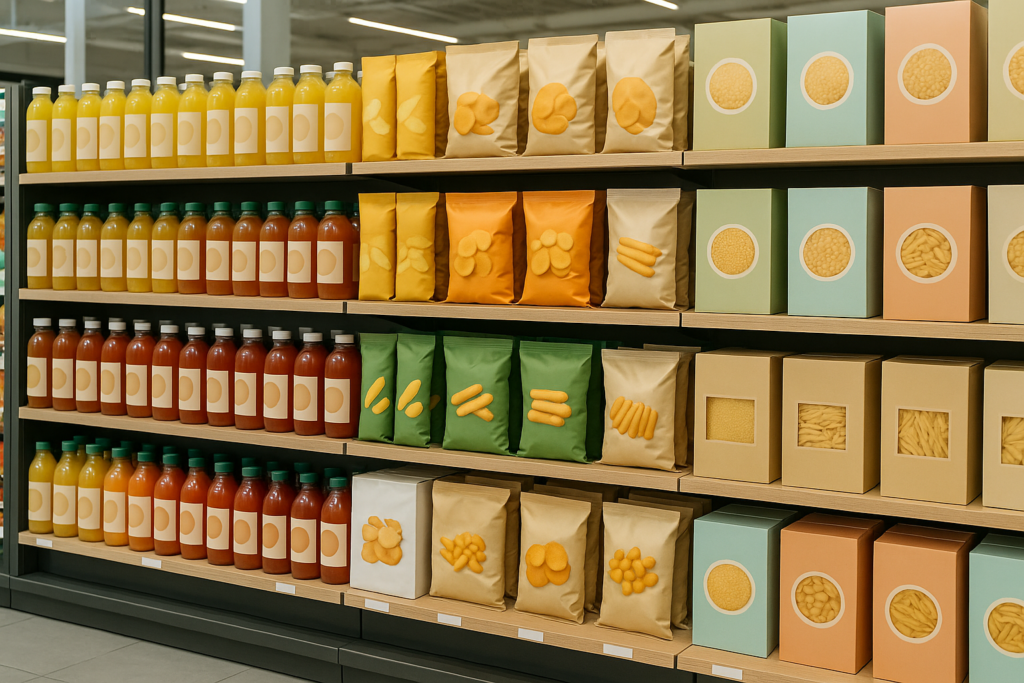Picture this: a bold, emerging F&B brand, one signature hero product, ready to disrupt the market. The founders know they’ve hit the right note, but growth whispers from every corner: more SKUs, new formats, private-label ventures, fancy packaging, digital pop‑ups, grocery takeovers.
The opportunity? Build a flexible brand architecture that lets the brand flourish, without fracturing its story.

Why Brand Architecture Matters for Emerging F&B Brands
- At its heart, brand architecture lays out how a company’s main brand, sub‑brands, product lines, and extensions interrelate. It’s the strategic backbone that keeps new offerings coherent and meaningful.
- In F&B, where flavor, format, and function blur, a clear architecture ensures your brand’s identity stays tethered, even as you branch into new categories or retail formats.
- Flexible frameworks like hybrid architectures or a branded-house with sub‑brands offer balance: recognizable unity with creative freedom
Private Label Opportunities & Emerging Brand Strategy in F&B
- Retailers are leaning into private label brands aggressively. These store-owned lines now capture a significant share of the F&B market—thanks to elevated quality, savvy branding, and strategic pricing.
- In 2024, over 20% of global FMCG sales were private labels; that share is growing.
- To thrive, emerging brands can learn from private labels: master e‑commerce channels, lean supply chains, sustainability, strategic innovation, and distinct brand identity.
- Look at the real‑world success of Bettergoods, Walmart’s premium store brand. It features $5-or-less, chef-inspired offerings and both taps into F&B trends and reinforces Walmart’s private label strategy.
Lessons from the F&B Trenches: Brand & Private Label Synergy
- In Ireland, Roll It, a heritage-driven pastry brand, upgraded its story and packaging through a subsidized branding program. It’s strong proof that branding elevates perception, even for private-label regional staples The Times.
- Similarly, global examples, like TreeHouse Foods, a major private label manufacturer, demonstrate the scale and sophistication retailers are bringing to store brand production.

A Rhythmic Path to a Flexible F&B Brand Architecture
- Anchor your core positioning. Nail what your hero product means, its emotion, its function, its story, before stretching outward.
- Choose your structure with care. A hybrid or branded-house model allows you to expand into new SKUs, formats, or private label partnerships without losing brand cohesion.
- Embrace private labels strategically. Let it complement—not cannibalize—your hero story. It’s a growth lever, a revenue engine, a footprint booster.
- Lean into flexibility. Fast-tracked innovation, online testing, launch pilots—all these let you expand into white space smartly.
- Stay grounded in identity. Whether private label or branded extension, your packaging, narrative, and personality must be unmistakably yours.
Why This Matters for Yventure’s Clients
Emerging F&B brands today face demanding retailers, discerning consumers, and a marketplace that rewards clarity and punishes dilution. A flexible, purpose-built brand architecture helps:
- Scale across SKUs, formats, and channels without fracturing your identity.
- Seamlessly partner with retailers on private labels or take your own brand into new spaces.
- Innovate fast, carry your story clearly, and keep pace with consumer and retail trends.
It’s not just planning, it’s designing your brand to stretch.
Ready to scale your brand without losing your story?
At Yventure Strategy, we help emerging F&B brands design flexible brand architectures that balance growth with clarity.
Let’s talk about how we can help your brand expand confidently.



